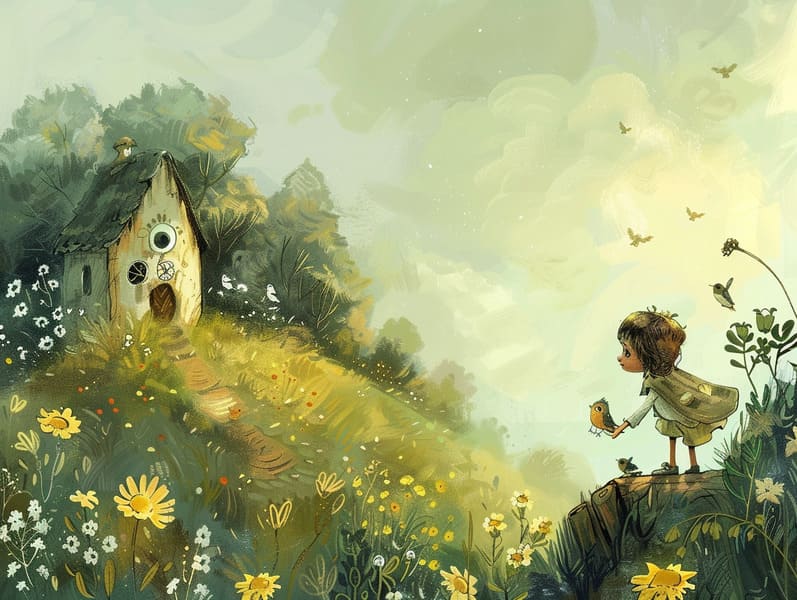The Beginning of Fairy Tales and the Unwavering Spell.
The Beginning of Fairy Tales and the Unwavering Spell.
Blog Article

Vintage fairy tales have deep roots. These tales have been narrated from one generation to the next ages before they were ever recorded. They came from a variety of cultures, including Middle Eastern traditions. They were initially passed along among adults, often carrying themes and messages reflective of the societal norms and beliefs of the time.
The famous Grimm duo, the two Grimm brothers, were among the first to compile and release many of these beloved fairy tales. Their anthology, "Grimm's Fairy Stories," included stories like "The Story of Cinderella," "Little Brother and Little Sister," and "Snow-White and Rose-Red," which have since become staples in the world of children's fairy tales. Similarly, the Danish author's imaginative narratives, such as "The Sea Maid," and "The Story of the Ugly Duckling," have touched hearts worldwide, securing their place in the pantheon of timeless fairy tales.
Despite their ancient origins, these stories remain as pertinent as ever, especially as children's bedtime stories. These delightful tales are now available in multiple formats, including artistically illustrated books, enchanting animations, and online fairy tales.
Their persistent charm can be linked to several fascinating points:
Vital Lessons: Traditional fairy tales often present important moral lessons. Fairy tales like "The Story of the Boy Who Cried Wolf" teach the importance of honesty, while "The Hare and the Tortoise" illustrate the values of determination and unpretentiousness. These narratives offer children clear distinctions between ethical and unethical, building their moral compass in a soft yet lasting way.
Warmth and Understanding: Classic fairy tales frequently illustrate protagonists facing challenges and struggles, provoking audiences to comprehend with their struggles and root for their triumphs. For instance, "The Tale of Beauty and the Beast" conveys the benefit of appreciating inner worth to see the inner self of a person, cultivating kindness and comprehension.
Cultural Knowledge: Many fairy tales are deeply embedded in the cultural contexts from which they came. Engaging with these stories can provide intriguing perspectives into different heritages, promoting a sense of cultural insight and respect.
Imagination and Innovation: The extraordinary elements in classic fairy tales—magic wands—fire up children’s inventiveness. These narratives transport readers to magical realms, firing up creative ideas and a sense of magic that remains a lifetime.
Classic fairy tales are not only entrancing but also didactic. They act as enchanted tools in cultivating various brain and heart skills in kids. When classic fairy tales are recited, they nurture speaking abilities by bringing new terms and meanings and intricate sentence structures. This practice also improves listening abilities and concentration, as children listen intently, looking forward to see what happens next.
Furthermore, exploring the themes and characters of old fairy tales can advance thinking skills and thought processes. Kids are guided to detect patterns, expect results, and understand cause and effect. These discussions also aid young ones convey their thoughts and feelings, fostering their emotional intelligence.
In today’s digital era, the presence of free fairy tales online has made these tales more reachable than ever. Web platforms and digital apps present wide arrays of traditional fairy tales that can be read or played anytime, anywhere. Fairy tales spoken are particularly common, featuring an entertaining method for children to take part in these bewitching tales. Audio stories and read-to-me videos bring characters and settings to life, often paired with delightful audio effects and music that amplify the narrative experience.
The unfading fascination of old fairy tales lies in their ability to adjust to today's world while keeping their core messages. Contemporary renditions of these narratives often spotlight more inclusive figures and modern settings, making them relevant to today’s audience. However, the essential messages of fearlessness, charity, and fairness remain unchanged, continuing to move young listeners of all ages.
Fairy tales also offer a sense of reassurance and understanding. They give a structured narrative with a evident beginning, middle, and end, often concluding with the resolution of conflicts and the triumph of good over evil. This reliability can be comforting for children, granting a sense of solidity in an dynamic world.
Classic fairy tales continue to delight and coach new generations, maintaining their grace and significance in modern society. As bedtime stories for kids, they serve a perfect blend of captivation and insight, nourishing moral values, empathy, and creativity. The proliferation of free fairy tales online and the sought after status of fairy tales read aloud promise that these traditional tales remain acquirable to new generations.
By safeguarding and releasing these tales, we continue to pay tribute to the rich tapestry of mythology and cultural heritage. Whether you are delving into a gorgeously illustrated book, experiencing a cyber collection, or listening via an spoken story, the elegance of popular fairy tales is always within reach. These fairy tales highlight of the enduring presence of tales and find it here its ability to unify us across epochs and places.
If you are reading a richly illustrated book, exploring a electronic library, or listening on an read-aloud book, the appeal of classic fairy tales is always within reach.
These fairy tales illustrate of the endless force of narratives and its ability to connect us across time and space, creating a bond that charms and informs alike.